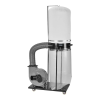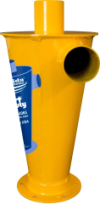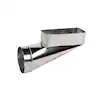- Joined
- Aug 3, 2020
- Messages
- 32
Hi everyone,
I’m in the early stages of planning a new shop focused mainly on knife making. Nothing has been built yet — I’m trying to think everything through carefully before starting. My property is a bit limited in size and layout, but I should be able to fit a decent workspace.
Here’s the basic plan so far:
The shop will be divided into two main areas:
There will also be a small office space and a large open (just roofed) area at the front of the workshop, connected via a big roller door.
Now here’s where I need advice:
I’m thinking of adding a small attached room or shed right next to the grinding room to house my big compressor and the dust collection system.
My goal is to have one large dust collector with ducting run to all the machines in the grinding room. I’ve seen setups like this in woodworking shops — but of course, they’re not dealing with metal sparks and abrasive dust.
The separate room should help with noise, and if some fine dust escapes, it’s contained. I even considered just venting a turbine outside, but that doesn’t seem like a responsible solution — even though local regulations where I live aren’t that strict.
Has anyone here built something similar or have experience with metal dust collection systems?
Would really appreciate any input or photos of your setups if you’ve tackled this problem before. Thanks!
I’m in the early stages of planning a new shop focused mainly on knife making. Nothing has been built yet — I’m trying to think everything through carefully before starting. My property is a bit limited in size and layout, but I should be able to fit a decent workspace.
Here’s the basic plan so far:
The shop will be divided into two main areas:
- A larger general workspace
- A smaller, enclosed grinding room
- Multiple belt and disc grinders
- A surface grinder with a belt conversion
- A vise for occasional angle grinder work
- Buffers
There will also be a small office space and a large open (just roofed) area at the front of the workshop, connected via a big roller door.
Now here’s where I need advice:
I’m thinking of adding a small attached room or shed right next to the grinding room to house my big compressor and the dust collection system.
My goal is to have one large dust collector with ducting run to all the machines in the grinding room. I’ve seen setups like this in woodworking shops — but of course, they’re not dealing with metal sparks and abrasive dust.
The separate room should help with noise, and if some fine dust escapes, it’s contained. I even considered just venting a turbine outside, but that doesn’t seem like a responsible solution — even though local regulations where I live aren’t that strict.
Has anyone here built something similar or have experience with metal dust collection systems?
Would really appreciate any input or photos of your setups if you’ve tackled this problem before. Thanks!





